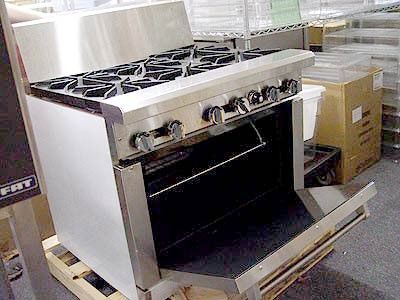Almost everyone seems to have his or her own theory on the subject of Understanding the Basics of Your Home's Plumbing System.

Plumbing is a necessary element of any type of home, responsible for supplying tidy water for alcohol consumption, cooking, and showering, in addition to eliminating wastewater securely. Understanding the fundamentals of home plumbing is necessary for every single home owner to make sure appropriate maintenance, troubleshooting, and, if necessary, repairs. In this novice's guide, we'll cover the fundamental principles of home plumbing to assist you become extra familiar with how it works.
Water Heating System
The water heating unit is responsible for home heating water for residential usage, consisting of showering, food preparation, and cleansing. Typical types of water heaters consist of tank-type hot water heater, tankless (on-demand) water heaters, and heatpump hot water heater. The hot water heater is connected to the water supply system and supplies warm water to plumbing components as required.
Drainage System
The drainage system eliminates wastewater from your home and lugs it away to a sewage therapy facility or septic tank. It includes a network of pipes, fittings, and components that transport wastewater from plumbing fixtures to the major drain line or sewage-disposal tank. Proper water drainage is essential to protect against obstructions, back-ups, and sewage leaks.
Ventilation System
The air flow system assists keep correct atmospheric pressure and stop drain gases from entering your home. Air vent pipes, also known as air vent heaps, prolong from plumbing fixtures to the roof, enabling sewage system gases to get away securely outside. Air flow pipelines also enable air to enter the water drainage system, promoting smooth wastewater circulation and stopping suction or vacuum cleaner effects.
Water Supply System
The water supply system brings clean water right into your home from a community water resource or a private well. It consists of a major water line that links to your home's plumbing system, normally situated underground. A water meter determines the quantity of water taken in, while a shut-off valve allows you to control the flow of water into your home.
Plumbing Fixtures
Plumbing components are tools that deliver water to different parts of your home and consist of sinks, faucets, toilets, showers, tubs, and devices such as dishwashing machines and cleaning devices. Each fixture is attached to the water system system by means of pipes and fittings and may have its shut-off valve for upkeep or emergency situations.
Common Plumbing Devices
Having the right tools accessible is important for carrying out basic plumbing fixings and upkeep tasks. Common plumbing tools include adjustable wrenches, monkey wrench, pliers, pipeline cutters, hacksaws, bettors, augers (or drainpipe snakes), and Teflon tape. Having these devices conveniently offered can help you take on minor plumbing concerns effectively.
Standard Plumbing Repair Work
While some plumbing repairs may call for specialist support, several common problems can be resolved with basic DIY methods. Learning exactly how to deal with a leaky faucet, unclog a drainpipe, change a toilet flapper, or repair a dripping showerhead can save you time and money on plumbing fixings.
Conclusion
Comprehending the essentials of home plumbing is vital for every single property owner to keep a risk-free, useful, and efficient plumbing system. By familiarizing yourself with the water system system, plumbing components, drainage system, ventilation system, common plumbing tools, and basic fixings, you can confidently deal with small plumbing concerns and guarantee your home's plumbing system operates smoothly.
Understanding Basics of Home Plumbing System: A Beginner's Guide
The Main Components of Your Home Plumbing System
The Water Supply System
This system is responsible for transporting fresh water into your home. It usually has a main water line that splits into two branches: one directed towards cold water services and the other connected to a water heater for hot water. The pressure is key here; it ensures water reaches all parts of your house.
The Drainage System
Once water has been used, it becomes wastewater that needs to be removed from your home. This is where the drainage system comes into play. It includes all the pipes that carry wastewater and sewage away from your house to sewage treatment facilities or septic tanks.
The Vent System
The vent system prevents sewer gases from entering your home and helps maintain the pressure balance that allows wastewater to flow out properly. These vents usually exit through the roof of your house.
Water Heating System
For those who enjoy hot showers or using hot water for cleaning, the water heater is a crucial part of the plumbing system. It can be a tankless system, which heats water on demand, or a traditional water tank model.
Common Plumbing Problems and Basic Troubleshooting
Plumbing systems, while designed to be durable, can face issues like clogged drains, leaky faucets, or low water pressure. Here are some basic troubleshooting tips:
Clogged Drains
Use a plunger or a plumber's snake to try and dislodge whatever is blocking the drain. Regular cleaning can prevent clogs.
Leaky Faucets
Often caused by worn-out washers or gaskets, these can usually be replaced by someone with basic DIY skills.
Low Water Pressure
This might be due to sediment build-up in your fixtures or a leak somewhere in your water line. Cleaning out aerators or seeking a professional to detect leaks might be necessary.
Preventive Maintenance Tips
Maintaining your plumbing system is key to avoiding emergencies. Regularly check for leaks, avoid disposing of grease down the sink, and have your system inspected by a professional plumber at least once a year.

I ran across that piece on What to Know About Plumbing: Basics, Tips, and Insights when doing a lookup on the web. Are you aware of another person who is enthusiastic about the niche? Be sure promote it. Thank you so much for taking the time to read it.
Call